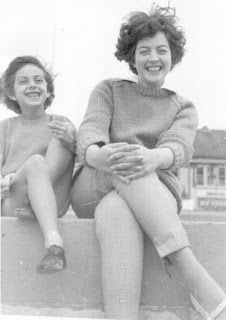World Backup Day.
I have a relatively quiet week ahead, after a busy March, and the rain has put a couple of projects on hold. Rather than fixate on the growing lake in my back yard, I am keeping busy with some housekeeping tasks for my business, like backing up my images. March 31st was World Backup day! Who knew there was such a thing? Apparently, it was created in 2011 as a reminder that so much of our information, photos and documents are now digital. What happens if we lose them, with no physical copy to back you up? The statistics say it all: 21% of people have never made a backup, 113 phones are stolen every minute, 29% of data loses are caused by accident...and that doesn't even consider the 30% of computers that are already infected with malware!! How do you backup your important documents and photographs? I have external hard drives, which are fine as long as the house doesn't burn down. Then there is "The Cloud". According to Google (who have their own cloud storage), "Cloud storage is a mode of computer data storage in which digital data is stored on servers in off site locations. The servers are maintained by a third party provider who is responsible for hosting, managing, and securing data stored on its infrastructure." (I was a little disappointed to find out the cloud is not actually in the sky, floating above us. ☺) For now, this is as safe as it gets for storing my work. I have two cloud accounts-one where I rent space and store my client work and my Forever account, where I own the space and store my most precious photos and important documents. Forever guarantees their safety for my lifetime plus 100 years. (To learn how they can make this promise, read about the Forever Guarantee Fund.)
Digital photography means that we photographers need to know a bit about computers to make the most of our art. At the very least, we need to know how to save our photos for the future, correct or manipulate them, post them on line and share them. It's enough to make you long for the good old days, when photography did not require computer knowledge...but wait! Back in the film days, you needed to be something of a chemist to develop your film and make prints! One reason I got into digital photography, back in 2001, was the control factor. It gave me back the control of the darkroom without all the messy chemicals! Film photographers also have the challenge of preserving their negatives, which are delicate things, easily damaged. What does it take to preserve historically significant work? For famous photographer Jacques Lowe, who photographed the campaign and presidency of John F. Kennedy, it meant storing his work in a fireproof safe in an bank vault in the World Trade Center. When the Twin Towers fell, 40,000 of his negatives were destroyed. All that remains of his life's work are the 1500 contact sheets and prints he stored elsewhere.
I suppose the takeaway from all this is that we can take all the precautions in the world but nothing is completely guaranteed. Stuff happens. My mother threw away a draw full of my father's hand-printed photographs, including most of my childhood record, when she moved into an assisted living home. Maybe that is what makes the photos that remain so important and worth backing up!



Comments
Post a Comment